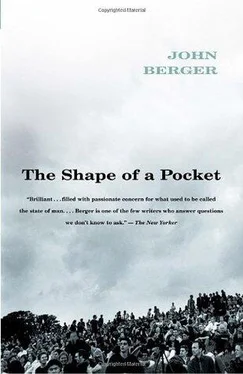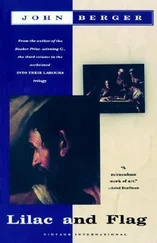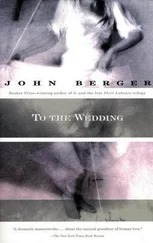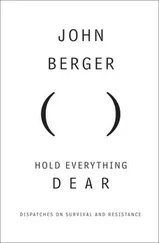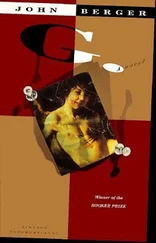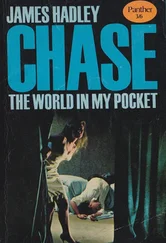Suddenly the pictures of Sebastiao Salgado come to my mind: his photos of the Brazilian gold mine and of coal miners in Bihar, India. Both artists are appalled by what they have to depict, and both show bodies strained to a similar breaking point, which, somehow, the bodies endure!
There the resemblance ends, for Salgado’s figures are working and his are monstrously unemployed. Their energy, their bodies, their huge hands, their senses, have become useless. Mankind has become barren, and there is scarcely any difference between the saved and the damned. No dream remains in any body, however beautiful that body once was. There is only anger and penance — as if God has abandoned man to nature and nature has become blind! Blind? Finally, it’s not true.
He lived and worked for another two decades after he painted the Last Judgement. And when he died, at the age of eighty-nine, he was carving a marble Pietà. The so-called unfinished Rondanini Pietà.
The mother who holds up the limp body of her son is in roughly carved stone. The son’s two legs and one of his arms are finished and polished. (Maybe they are the remnants of another sculpture he partially destroyed — it doesn’t matter: this monument to his energy and solitude stands as it is.) The crossing line, the frontier between the smooth marble and the rough stone, between the flesh and the block of rock, is at the level of Christ’s sex.
And the immense pathos of this work comes from the fact that the body is returning, is being breathed back with love into the block of stone, into his mother. It is, at last, the opposite of any birth!
I’ll send you Salgado’s photo of Galician women wading into the Ria de Vigo, searching in the month of October for shellfish at low tide …
11 Rembrandt and the Body
At the age of sixty-three he died, looking, even by the standards of his time, very old. Drink, debts, the death through the Plague of those nearest to him are amongst the explanations of the ravages done. But the self-portraits hint at something more. He grew old in a climate of economic fanaticism and indifference — not dissimilar to the climate of the period we are living through. The human could no longer simply be copied (as in the Renaissance), the human was no longer self-evident: it had to be found in the darkness. Rembrandt himself was obstinate, dogmatic, cunning, capable of a kind of brutality. Do not let us turn him into a saint. Yet he was looking for a way out of the darkness.
He drew because he liked drawing. It was a daily reminder of what surrounded him. Painting — particularly in the second half of his life — was for him something very different: it was a search for an exit from the darkness. Perhaps the drawings — with their extraordinary lucidity — have prevented us seeing the way he really painted.
He seldom made preliminary drawings, he began painting straightaway on the canvas. There is little of either linear logic or spatial continuity in his paintings. If the pictures convince, they do so because details, parts, emerge and come out to meet the eye. Nothing is laid out before us as it is in the work of his contemporaries like Ruysdael or Vermeer.
Whereas in his drawings he was a total master of space, of proportion, the physical world he presents in his paintings is seriously dislocated. In art studies about him this has not been emphasised enough. Perhaps because one needs to be a painter rather than a scholar to perceive it clearly.
There is an early painting of a man (it’s himself) before an easel in a studio. The man is not much more than half the size he should be! In the marvellous late painting Woman at an Open Door (Berlin) Hendrickje’s right arm and hand are the size of those of a Hercules! In Abraham’s Sacrifice (St Petersburg) Isaac has the physique of a youth but in proportion to his father is no larger than an eight-year-old!
Baroque art loved foreshortenings and improbable juxtapositions, but, even if he profited by the liberties won by the Baroque, the dislocations in his paintings are in no way similar, for they are not demonstrative: they are almost furtive.
In the sublime St Matthew and Angel (The Louvre) the impossible space over the Evangelist’s shoulder for the Angel’s head is furtively insinuated, as if by the whisper the Angel is whispering into the writer’s ear. Why in his paintings did he forget — or ignore — what he could do with such mastery in his drawings? Something else — something antithetical to ‘real’ space — must have interested him more.
Leave the museum. Go to the emergency department of a hospital. Probably in a basement because the X-ray units are best placed underground. There are the wounded and the sick being wheeled forward, or waiting for hours, side by side, on their trolleys, until the next expert can give them attention. Often it is the rich, rather than the most sick, who pass first. Either way, for the patients, there underground, it is too late to change anything.
Each one is living in her or his own corporeal space, in which the landmarks are a pain or a disability, an unfamiliar sensation or a numbness. The surgeons when operating cannot obey the laws of this space — it is not something learnt in Dr Tulip’s Anatomy Lesson. Every good nurse, however, becomes familiar by touch with it — and on each mattress, with each patient, it takes a different form.
It is the space of each sentient body’s awareness of itself. It is not boundless like subjective space: it is always finally bound by the laws of the body, but its landmarks, its emphasis, its inner proportions are continually changing. Pain sharpens our awareness of such space. It is the space of our first vulnerability and solitude. Also of disease. But it is also, potentially, the space of pleasure, well-being and the sensation of being loved. Robert Kramer, the filmmaker, defines it: ‘Behind the eyes and throughout the body. The universe of circuits and synapses. The worn paths where the energy habitually flows.’ It can be felt by touch more clearly than it can be seen by sight. He was the painterly master of this corporeal space.
Consider the four hands of the couple in The Jewish Bride. It is their hands, far more than their faces, which say: Marriage. Yet how did he get there — to this corporeal space?
Bathsheba Reading David’s Letter (The Louvre). She sits there life-size and naked. She is pondering her fate. The King has seen her and desires her. Her husband is away at the wars. (How many millions of times has it happened?) Her servant, kneeling, is drying her feet. She has no choice but to go to the King. She will become pregnant. King David will arrange for her fond husband to be killed. She will mourn for her husband. She will marry King David and bear him the son who will become King Solomon. A fatality has already begun, and at the centre of this fatality is Bathsheba’s desirability as a wife.
And so he made her nubile stomach and navel the focus of the entire painting. He placed them at the level of the servant’s eyes. And painted them with love and pity as if they were a face. There isn’t another belly in European art painted with a fraction of this devotion. It has become the centre of its own story.
On canvas after canvas he gave to a part of a body or to parts of bodies a special power of narration. The painting then speaks with several voices — like a story being told by different people from different points of view. Yet these ‘points of view’ can only exist in a coporeal space which is incompatible with territorial or architectural space. Corporeal space is continually changing its measures and focal centres, according to circumstances. It measures by waves, not metres. Hence its necessary dislocations of ‘real’ space.
Читать дальше
